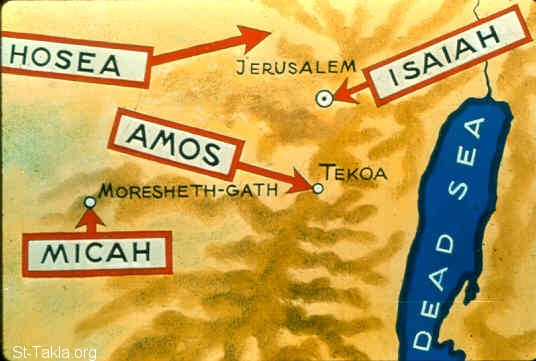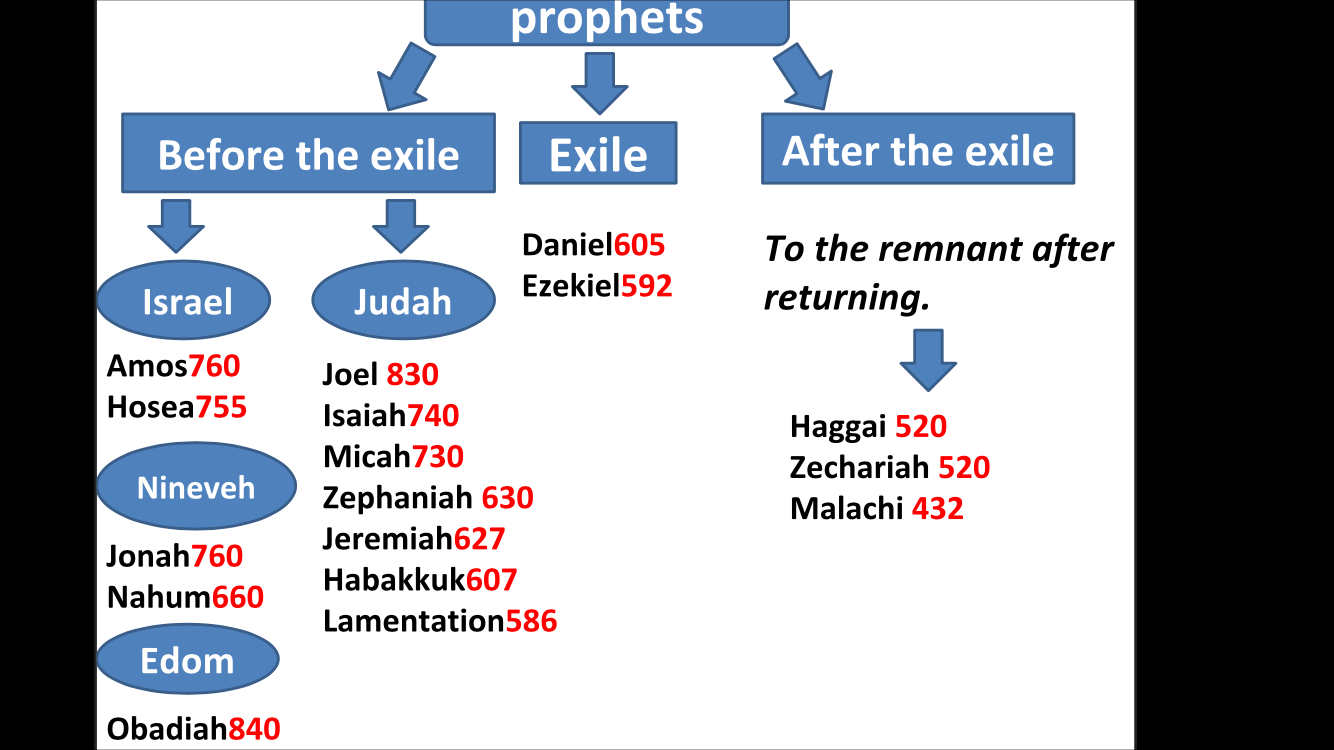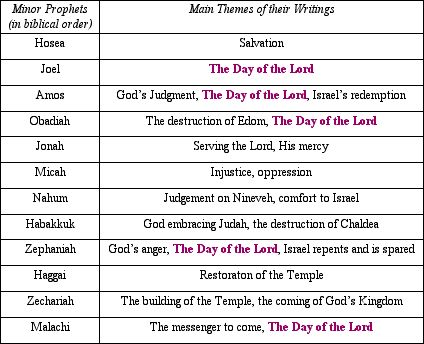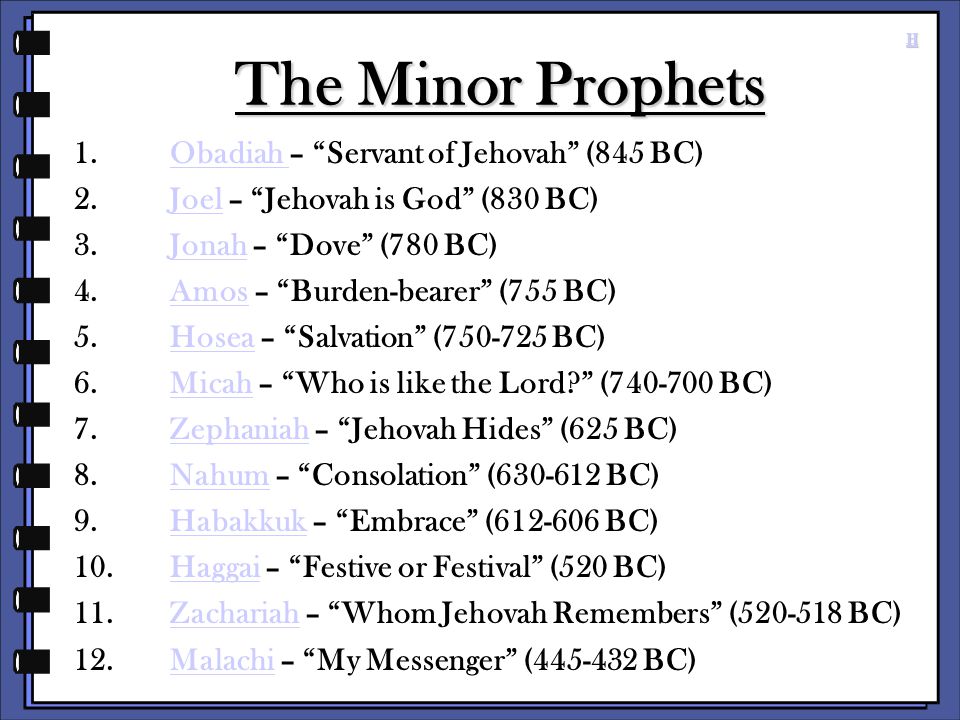Week 2: Joel
Week 2: Joel 1-3
Objective:
- The Locust Plague
- Mourning for the Land
- The Day of the Lord
- God’s Spirit Poured Out
- God Blesses His People
Resources:
- Fr Tadros Y Malaty Commentary
- Catena Bible Commentary
- Fr Dawoud Lamie Bible study (Arabic)
- Minor Prophets SUSOPTS
Activity for every week: Can you recite the 12 minor prophets?
Reading:
- Joel 1:1-20
- Joel 2:1-32
- Joel 3:18-21
Key verse(s):
“And it shall come to pass afterward, That I will pour out My Spirit on all flesh" Joel 2:28
NOTE TO SERVANT:
-
Please plan to ask and review these questions every week:
- Who are the minor prophets? Can you recite them?
- The theme for last week's minor prophet
- Highlight Messianic prophecy
- Who are the minor prophets? Can you recite them?
Minor Prophets introduction:
-
The Major and Minor Prophet division of the Holy Bible does not denote the importance or rank of the writing prophets, but the length of the Holy Books which bear their prophecies.
- Ex: Jonah 4 chapters - Isaiah 66 chapters
- There are 12 minor prophets and 4 major prophets (5 books including Lamentations)
- In the Tanakh (Hebrew Bible), all these books were listed under "prophets". In the Septuagint and Vulgate translations, this classification of major and minor was mentioned.
- The prophet in the OT was someone who passed God's message to the people. A prophet in the NT is also someone who passes God's message or news (God's love and salvation for all mankind).
- In the OT, there were many prophets (Moses, David, Elijah, Elisha, etc.), but when we refer to the "Prophets", we refer to the ones who recorded their prophecy.
- All prophecies had one goal: Repentance!
- Recorded prophecies were split into three groups: Before, during, and after the exile.
- Before: Repent so God doesn't bring the exile
- During: Repent so God can end the exile and take us back to our land
- After: Repent because the Messiah is coming
- The books of the prophets are rich with Messianic prophecies. Our Lord fulfilled all.
- The meaning of the names of the prophets is usually the message of their writings.
- The prophetic books always start with a strong tough message and then end with a joyful promising message.
- All books have different themes. All books have the same message (repentance).
-
|
Minor Prophets |
||
|
Before Assyrian Captivity Directed to the North Kingdom |
After Assyrian and before Babylonian captivities Directed to the South Kingdom |
After Captivity |
|
1. Hosea 2. Joel 3. Amos 4. Obadiah (Edom) 5. Jonah |
6. Micah 7. Nahum (Nineveh) 8. Habakkuk 9. Zephaniah |
10. Haggai 11. Zechariah 12. Malachi |
Comments:
Theme of Joel: The Day of the Lord
Messianic Prophecy: The Holy Spirit on Pentecost (2:28)
- Joel is one of the minor prophets.
-
The book of Joel was written for the Southern Kingdom of Israel
- Joel means "Jehovah is God"
- The book of Joel can be divided into two major sections: the day of the Lord in retrospect (ch. 1); and the day of the Lord in prospect (chs. 2,3).
- Chapter 1:
- The waves of locusts are like levels of sin:
- Chewing locust: small - can't move much. Small thoughts into the heart and mind
- Swarming locust: started to move.
- Crawling locust: developed small wings.
- Consuming locust: Strong wings that can fly. Sins when they completely grow and take over the human
- St. Jerome symbolizes these four waves to the four kingdoms that disciplined Judah (Southern kingdom): Babylon, Persia, Greece, and Rome.
- V.6: Symbolizes the nations that will be very strong and take them to captivity
- V.9-10: No worship is taking place due to the lack of everything = no joy or communion with God
- The waves of locusts are like levels of sin:
- Chapter 2:
- V.1-11: The day of the Lord will be fearful to those who didn’t listen to his voice/warnings (locusts). Those who fear God, wait for this day joyfully.
- V.12-17: God is calling for repentance.
- V.13: God wants our hearts to follow Him and offer true repentance. Not just an outside fake repentant look.
- V.15-17: God is calling everyone to repent
- V.23: Rain/water is a symbol of the Holy Spirit. Former rain comes at the beginning right after sowing to help the seeds grow and bud. Latter rain comes later to help the small buds become big trees and produce fruits. The Holy Spirit (Former rain) comes on the day of baptism to purify us and keeps coming again (latter rain) during our life to sanctify us until the end of our life.
- V.28: A prophecy on the day of Pentecost. When His Spirit was poured on His disciples. St. Peter quoted Joel in his sermon (Acts 2).
- Chapter 3:
- V.18: There will be joy and happiness after we receive the Holy Spirit. The dry mountains are now dripping with wine (wine is a symbol of Joy in the Bible).
- The Book ends with a message of hope and joy in seeing God's work in His Church.
- Egypt and Edom: symbols of sin. Sin and violence will end, and God will reign forever (V.20)
Review/recap questions:
**Servant may add more questions
- Whom do the locusts represent?
- What is meant by the day of the Lord?
- Who quoted the prophet Joel in the NT?
- Find a prophecy in this book and when it was fulfilled. Give verses.
- How can the people escape this invasion?
Homework:
**Servant may add more questions
- Joel asked the priests to a) Consecrate a fast b) Call a sacred assembly c) cry out to the LORD d) all of those
- To whom should the beasts of the field cry out? a) each other b) the Lord c) the hunters d) Joelan
- What do verses 28-29 in chapter 2 prophesy about?






No Comments